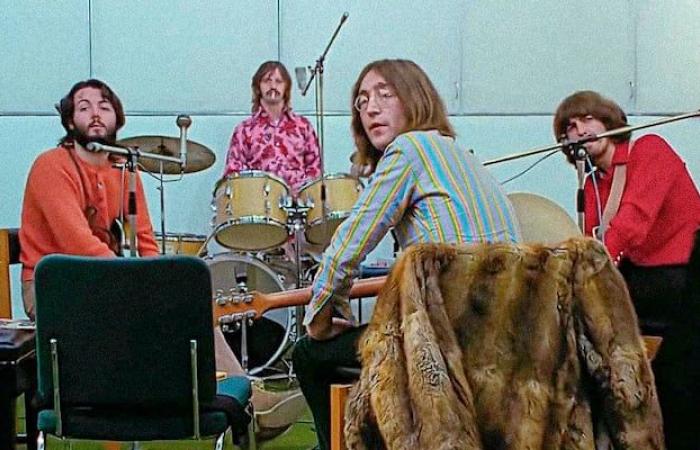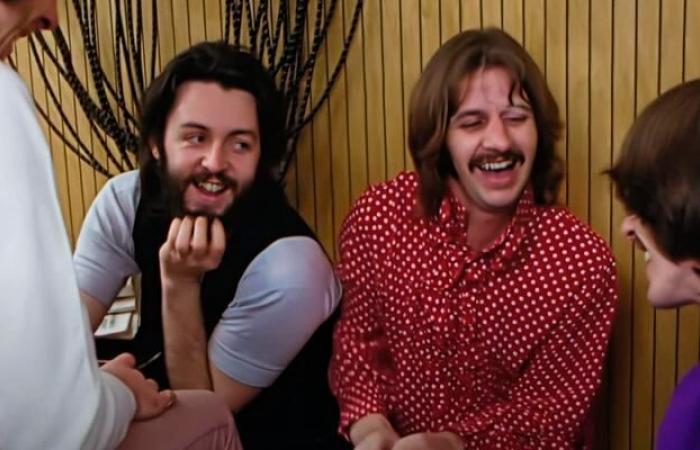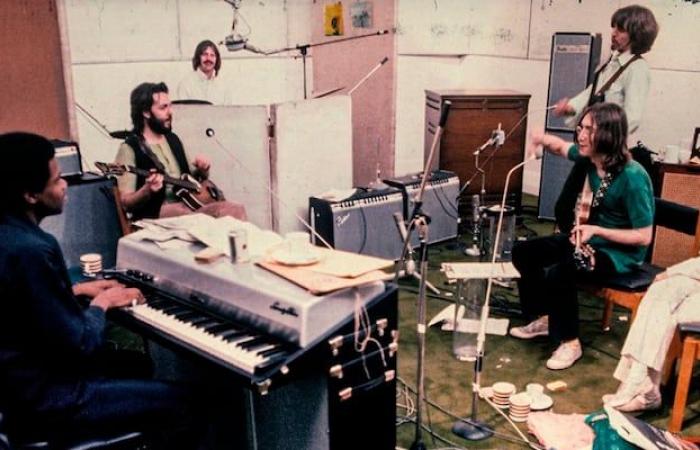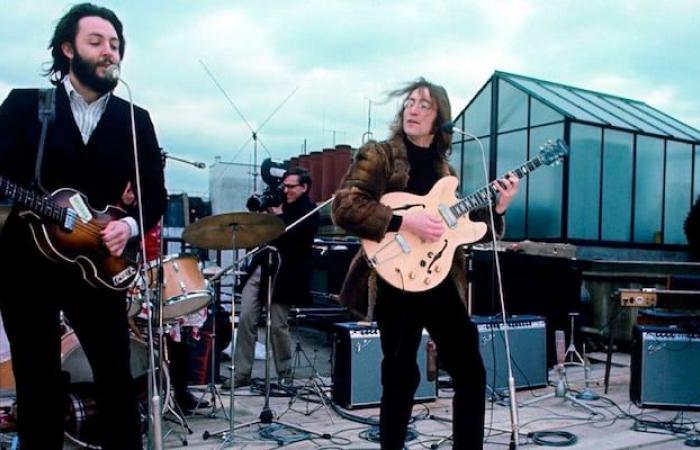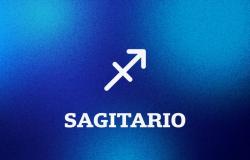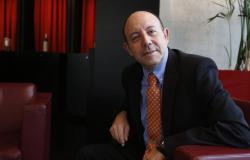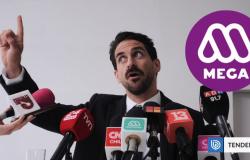On January 2, 1969, John Lennon, Paul McCartney, Ringo Starr and George Harrison met at Twickenham studies to start recordings of what would become “Let It Be”. The last studio album of The Beatles, which contained jewels like “Get Back” and the ballad that gives name to the album.
That day, the musicians showed their best face and treated each other with a prudent cordiality. Lennon wished his teammates happy, since he had not been in the traditional New Year celebration made by the band, and they returned the greeting. But the truth is that In the air a tension impossible to ignore floated: the group crumbled apart and they all knew.
To top it off, The Beatles had proposed an overwhelming task: compose and rehearse 14 new songs to play them live and record a record and a television special at the same time. For that, they had just 2 weeks. All under the antenna looks cameras that filmed everything for a documentary … and also by Yoko Ono, who was always present.
Finally, the television special never existed and “Let It Be” was released more than a year after his recording. In the middle, a lot of water passed under the bridge: George Harrison left and returned from the band, gave a last show on the terrace, threw another great and emblematic album (“Abbey Road”), began working on their solo projects, hired another producer and officially separated.

The long and winding path of the Beatles
Throughout the recordings, the Beatles had their moments of laughter, complicity and – of course – creative genius. The musicians rescued old without finishing compositions and created dozens of new songs. Some would make the album “Let It Be”, others would see the light in “Abbey Road” and some others would end up on their solo albums.
In addition, they took the time to have fun playing old Rocanroles by Chuck Berry and Carl Perkins. That attitude coincided with Paul’s idea of returning to the roots, of playing guitar rock and leaving complex arrangements and overwhelming. In short, the objective of what the “Get Back project” called was honoring the story of a band that formed above a stage and not within a study.
However, The days continued to pass and the Beatles felt that the Odyssey advanced without a clear direction. The songs did not convince Paul, Paul was bothered by the lack of enthusiasm of his teammates and his classmate bothered Paul’s attitude, who saw as a controller and monophadora.
No one was comfortable, the cameras, morning test schedules and the cold and alien study in which they recorded. “You can’t make music at eight in the morning in a strange place, with people filming you all the time,” Lennon would complain later. The internal tensions became larger and the atmosphere became unbearable.
The situation reached a cúlmine point on January 10, when George Harrison decided to leave the group, fed up with the internal pulls and feel aside from the creative process. However, he would return a few days later. The guitarist’s return coincided with the return of the Beatles to his house: Abbey Road’s studies.

The Beatles and the concert on the terrace
One of the main dispute points during the trials revolved around the final concert with which the Beatles planned to conclude the project. Dozens of places were shuffled: from a floating boat on Altamar to the Sabratha Libya amphitheater. When the musicians decided that they would not leave Britain, there was also talk of the Montfort Hall in Leicester.
It was discussed whether it had to be in a closed or outdoor place, in an intimate enclosure or for thousands of people. George commented that it would be good if the album came out a week before the show, so that people could identify with the songs. While John argued that it would be better to do it in a small place for the sound to be good.
But the truth is that With the exception of Paul, no beatle was too wanting to play live again. “We should do the show in a place where it is not allowed. We would have to enter illegally, accommodate the instruments and that should be the show,” Macca joked at some point. Although in the end it ended up being premonitory.
-When George left and returned to the group, the idea of the show was finally discarded. However, With the transfer of rehearsals to Abbey Road, the waters were appeased. The sessions flowed more naturally, many of the shots were recorded that finally remained on the disc and The idea of finishing the project with a live presentation came back to strength.
Near noon of January 30, 1969, All the necessary equipment from the number 3 of Saville Road, an old 5 -story building, Apple Records headquarters and They gave the iconic concert on the terrace. Under the icy London winter noon, The Beatles gave a 40 -minute show for the few curious who passed through the street. It would be the last one in its history.

The hand of the controversial producer Phil Spector
The Get Back journey, which Lennon defined as a “hell,” lasted 21 days. From there, dozens of hours of recordings and hundreds of hours of filming left. However, and In spite of all the time they invested, the tapes were drawn up and the band disregarded the project.
A few weeks later, almost inertia, the Beatles would return to the studio to record “Abbey Road.” During the following months, the group finished realizing their “divorce”, as John would call it. After that album, although they were not officially separated, each of them began working on their solo projects.
In January 1970, when for the eyes of the public he was still part of a band, Lennon launched his single single “Instant Karma.” The song, which reached number 5 in England and number 3 in the United States, was produced by the Great, controversial and temperamental American producer Phil Spector.
The result liked John so much that he decided to dust off Get Back’s recordings (Let It Be) and handed them to Spector to see what he could do with them. The producer had become famous at the beginning of the 60s, when he worked with artists such as The Righteous Brothers and Ike and Tina Turner, Among numerous other artists.
His monumental productions marked an era, thanks to his technique known as “sound wall.” It consisted of superimposing many layers of monumental instruments and orchestrations that created a “wall” against which the voices were mounted.
Without supervision of any beatle, Spector worked with absolute freedom and applied his personal seal to each of the songs. In this way, He turned what a minimalist album was a complex work, full of orchestral and coral overwhelming. Yes, quite the opposite of what Paul McCartney had originally conceived.
The end of The Beatles
The new mixture exploded Paul, especially what the producer had done with “The Long and Winding Road”, which was conceived as an intimate ballad. McCartney tried by all the media that Lennon and Spector gave up throwing the album that way. But he wasn’t successful.
However, Paul had some cards under his hand. The bassist came forward to announce the separation of the group and also to launch his first solo album before “Let It Be” are edited. Both things lit Lennon’s anger. But little could do and, after all, the situation did not change much. The Beatles had ended a long time ago.
The launch of the McCartney album did not make a dent in the commercial performance of “Let It Be”. The final work of The Beatles sold millions of albums, reached number 1 in the United Kingdom and in the United States and received several platinum certifications worldwide.
“Let it be” did nothing more than aggravate the strong internal tensions of the group that ended in their separation. However, The Beatles showed that – even at their worst time – they were the best. Even in the most high moments of their relationship, they created songs that continue to resonate more than 50 years later. As Philip Norman said in the biography he wrote of Paul McCartney, “music worked like a kind of healing amnesia.”


